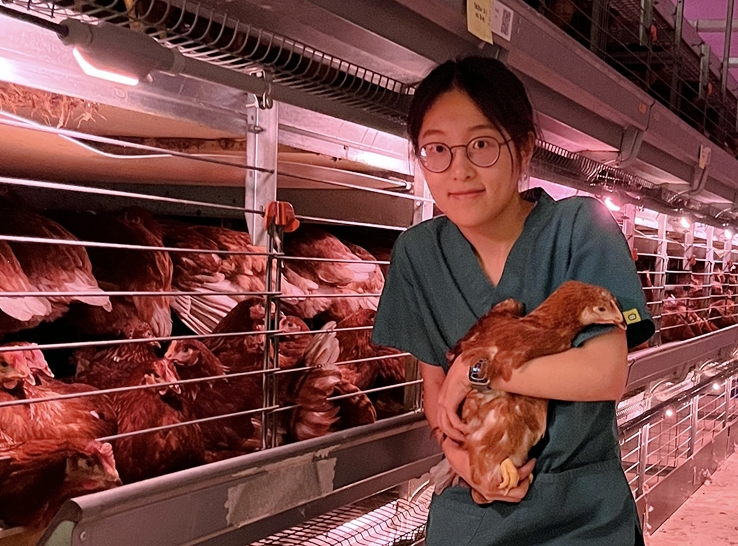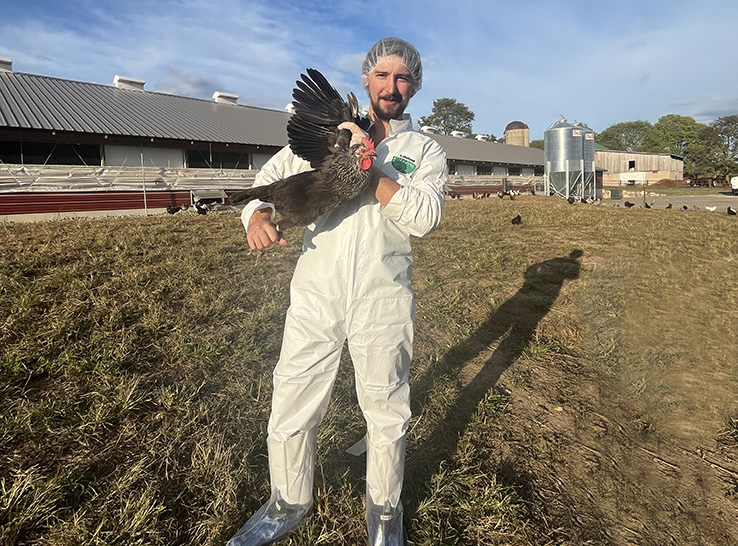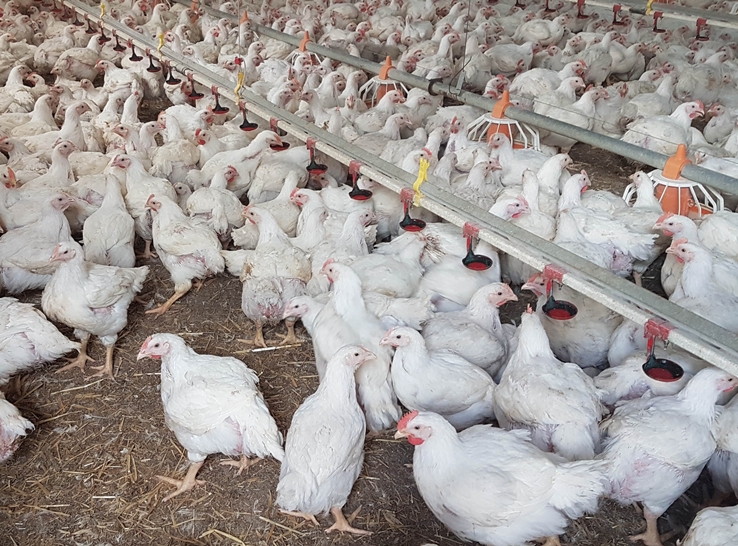The shift to cage-free layer housing opened the door to poultry diseases that disappeared during the years of cage housing.
“The cage era was a long time in our history, and there were a lot fewer diseases to focus on,” reported Dan Wilson, DVM, Wilson Vet Co.
“But how did we not see some of the diseases coming back that we are dealing with now and trying to solve?” he asked. “Our differential list today existed well before the cage era, so we should have seen these coming.”
Wilson identified 23 diseases common during pre-cage production, which dropped to just 7 diseases with cages. His post-cage differential is now up to 22 diseases, and he sees many of these diseases in his five-veterinarian practice. They work with a wide variety of clients throughout the US, from conventional layer farms and new construction to alternative housing systems with pastures.
At the Devenish Symposium held during the 2025 PEAK conference, Wilson discussed the return of several diseases from the past that affect today’s egg layers.
Spotty liver disease
“We should have known spotty liver disease was coming when we put birds back on floors or where they have outdoor access,” Wilson said. “Globally, spotty liver disease started to show up in Australia in the 2000s and isolations of it in the UK and Europe in the 2010s.”
The disease, also known as vibrionic hepatitis, was common in poultry in the 1950s but disappeared when layers moved to cages.
“It’s one of the few layer diseases we have with a pathology presentation when you open a bird. It’s spotty liver based on white speckling of the liver,” he said.
“Spotty liver causes a lot of mortality in flocks, typically occurring at peak egg production and post peak. If a flock is exposed for the first time, it can occur later in the layer cycle.”
The disease affects birds more frequently in warmer climates and during warmer parts of the year.
“It is definitely a very hard disease on birds,” he added. He has measured temperatures as high as 112.6°F (44.7°C) in euthanized birds.
Spotty liver disease is transmitted via a fecal-oral route, by wild birds and rodents or through contaminated soil and water. Once introduced, the disease moves rapidly through the flock. Wilson advises to expect acute production drops of 10% to 30%. Hens will remain carriers after infection.
“You can have spotty liver disease in indoor birds on concrete floors and, in some cases, even in cages,” Wison said. “A lot of people think that because their birds aren’t outside, they won’t have a problem. But I encourage you to rethink that and include it as a possible disease differential for farms.”
Erysipelas
Erysipelas is another reemerging disease on Wilson’s list. “This bacterium is already spread throughout the US in the soil and other species like pigs and turkeys,” he said.
A clear indication of erysipelas in layers is an enlarged spleen, Wilson added. Unfortunately, diagnostic labs and pathologists may not check for erysipelas because they are not aware that the disease can be a problem in egg layers. He recommended checking the birds for erysipelas by using a special culture enrichment, PCR or both.
“One thing we see with erysipelas in the US is persistently high mortality because birds aren’t vaccinated and other interventions like antibiotics aren’t available,” Wilson continued. “We’ve seen patterns where erysipelas flocks can go well past 50% cumulative mortality over time.”
Other signs of erysipelas are decreased production and water consumption, poor feather coverage, lesions and enlarged livers.
Looking back at global trends, Wilson noted that erysipelas was first observed in bird litter and outdoor access in the early 2000s. He also cited a recent Swedish paper discussing the spread of erysipelas throughout Europe and the use of killed vaccines for control.
“In the US, we’re now seeing more and more erysipelas cases and people are surprised,” he remarked. “We should have seen this coming many years ago.”
Bird fat conditioning
“One non-disease but health-related condition we should have anticipated is cage-free bird fat condition,” Wilson said.
“It’s just common sense that when we let birds out of cages, there’s going to be a higher energy expenditure,” he continued. “Birds are going to eat more and will need more fat condition reserves for that environment.
“Unfortunately, common sense doesn’t always prevail. In our clinic, we strongly encourage posting sessions and consistent scoring of birds, during either wellness bird posting sessions.
Wilson also presses his clients for accurate body weights, which he says is a problem because automatic bird scales are often used.
“We see repeatedly where automatic bird scales are off by multiple tenths of a pound in body weight,” he related. “That information goes back to production personnel and nutritionists, and they aren’t told the correct body weight for flocks.
“Scales should often be checked and calibrated with other methods to be sure bird weights given to a nutritionist are accurate.”
Roundworms
When birds are raised on the floor, roundworms will be a problem, Wilson related.
“Our main focus in the US is to either keep farms completely free of roundworms or limit them so they are not heavy loads,” he said. “It’s well documented that heavy loads of roundworms in affected birds can migrate into the shell eggs. Big retailers choose to treat this as a foreign object, and nobody wants to receive that phone call from a retailer.”
The solution involves a monitoring program with fecal samples taken intermittently at farms and the use of a base deworming treatment where permitted.
“We do have access to fenbendazole for conventional layers in the US,” Wilson explained. “We use it when needed at a threshold of roundworms that we think is effective and will keep the load down.
“We also make sure not to treat flocks with too high of roundworm levels because some flocks react with an unknown secondary reaction, which may cause mortality.”
Poultry red mites
More commonly known in Europe, poultry red mites have appeared in the US and are expected to become more prevalent, potentially requiring future treatment.
Unlike the common and less harmful northern fowl mite, the parasitic red mite poses a danger to poultry by carrying pathogens such as erysipelas and cholera. The mites are also an annoyance for workers.
“We know historically they’ve been found in backyard flocks for some time,” Wilson said. “Our clinic found red mite cases in the Midwest and the South. And we know of cases in the Northeast, mid-Atlantic and West Coast. They are here and are going to get worse.
“You will need to be careful not to misidentify them as northern fowl mite or another non-parasitic mite,” he added.
When red mites are suspected on a client’s farm, a mite trap program is implemented to identify the mite and monitor numbers.
Final thoughts
Battling the diseases and other health conditions from the past requires training and education to help employees recognize potential problems.
“We hear of farms that had mysterious mites for months, but employees didn’t think to tell anybody,” Wilson said. “This is a common theme where a farm will see things well before their service person or someone in the company.
“Make sure everybody knows what to look for and what’s good and not good,” he added.







